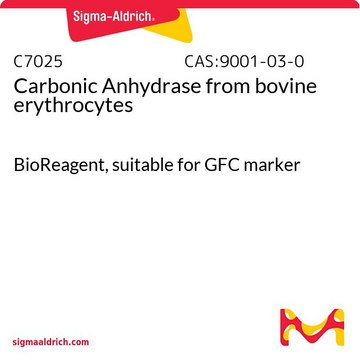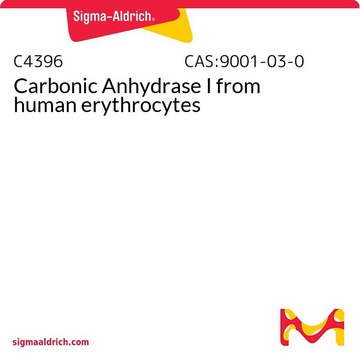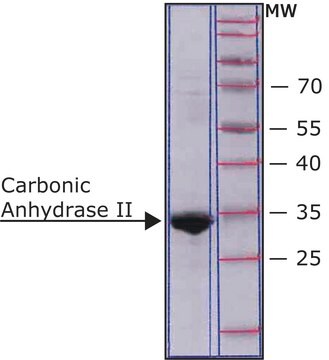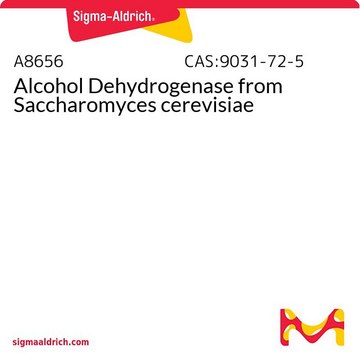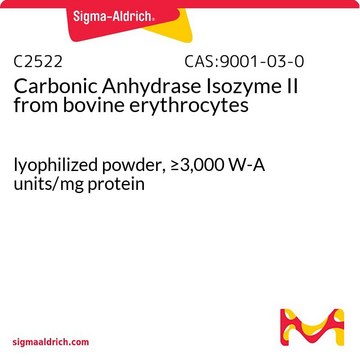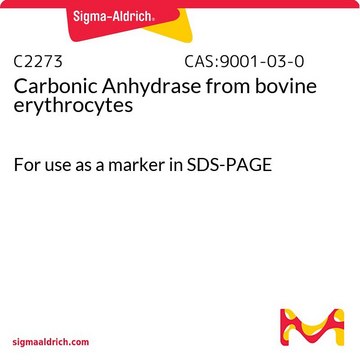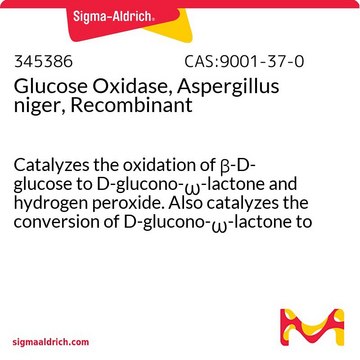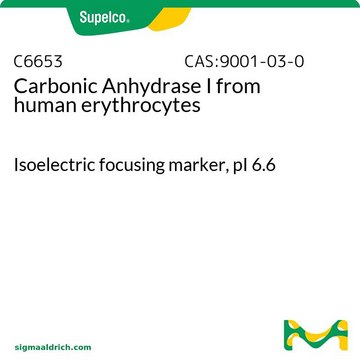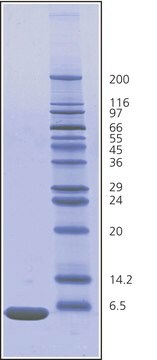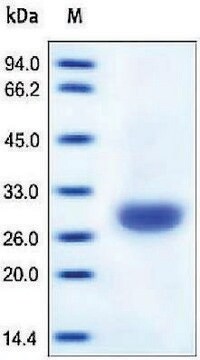C2624
Anhydrase carbonique from bovine erythrocytes
≥95% (SDS-PAGE), specific activity ≥3,500 W-A units/mg protein, lyophilized powder
Synonyme(s) :
Déshydratase carbonique, Hydrolase de carbonate
About This Item
Produits recommandés
Source biologique
bovine erythrocytes
Niveau de qualité
Pureté
≥75% protein basis (biuret)
≥95% (SDS-PAGE)
Forme
lyophilized powder
Activité spécifique
≥3,500 W-A units/mg protein
Solubilité
deionized water: >10 mg/mL
Température de stockage
2-8°C
Vous recherchez des produits similaires ? Visite Guide de comparaison des produits
Application
Actions biochimiques/physiologiques
Définition de l'unité
Mention d'avertissement
Danger
Mentions de danger
Conseils de prudence
Classification des risques
Resp. Sens. 1
Code de la classe de stockage
11 - Combustible Solids
Classe de danger pour l'eau (WGK)
WGK 3
Point d'éclair (°F)
Not applicable
Point d'éclair (°C)
Not applicable
Certificats d'analyse (COA)
Recherchez un Certificats d'analyse (COA) en saisissant le numéro de lot du produit. Les numéros de lot figurent sur l'étiquette du produit après les mots "Lot" ou "Batch".
Déjà en possession de ce produit ?
Retrouvez la documentation relative aux produits que vous avez récemment achetés dans la Bibliothèque de documents.
Les clients ont également consulté
Notre équipe de scientifiques dispose d'une expérience dans tous les secteurs de la recherche, notamment en sciences de la vie, science des matériaux, synthèse chimique, chromatographie, analyse et dans de nombreux autres domaines..
Contacter notre Service technique
